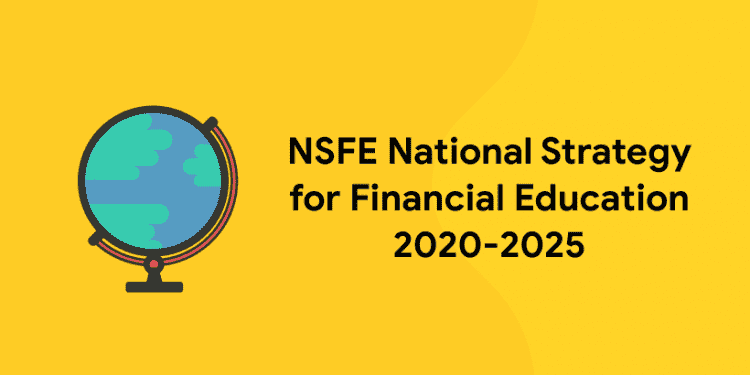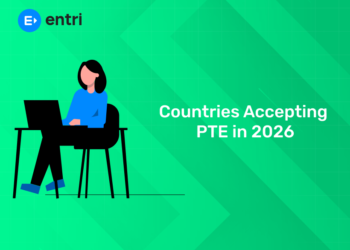Table of Contents
The financial underpinnings of our country are turning an unpredictable alteration in the unprecedented situation. One of the major events that happen in determining the future of the Indian financial sector is the release of National Strategy for Financial Education (NSFE) 2020-2025. It can change the financial education methodology and sector. It is one of the major financial current affairs that is surely going to be asked in every bank exam and every exam related to the economic and financial affairs. Let us look into the objectives, history and key highlights and a short summary of the NSFE 2020-2025.
What is NSFE ?
NSFE is the abbreviated form of the National Strategy for Financial Education. The National Strategy for Financial Education (NSFE): 2020-2025 document has been released by the Head of the Technical Group on Financial Inclusion and Financial Literacy (TGFIFL) – The Deputy Governor, Reserve Bank of India (RBI) on 20th August 2020. This NSFE for the period 2020-25, the second one after the 2013-18 NSFE, has been prepared by the National Centre for Financial Education (NCFE) in consultation with all the Financial Sector Regulators (RBI, SEBI, IRDAI and PFRDA), DFS and other Ministries of Govt. of India and other stakeholders (DFIs, SROs, IBA, NPCI) under the aegis of the Technical Group on Financial Inclusion and Financial Literacy under the Chairmanship of Deputy Governor, RBI. The NSFE document intends to support the Vision of the Government of India and Financial Sector Regulators by empowering various sections of the population to develop adequate knowledge, skills, attitude and behaviour which are needed to manage their money better and plan for their future. The Strategy recommends adoption of a Multi-Stakeholder Approach to achieve financial well-being of all Indians.
Click Here for the List of all Bank Exams in India
The Strategic Objectives of NSFE 2020-2025
1: Who was the first woman President of India?
- Inculcate financial literacy concepts among the various sections of the population through financial education to make it an important life skill
- Encourage active savings behaviour
- Encourage participation in financial markets to meet financial goals and objectives
- Develop credit discipline and encourage availing credit from formal financial institutions as per requirement
- Improve usage of digital financial services in a safe and secure manner
- Manage risk at various life stages through relevant and suitable insurance cover
- Plan for old age and retirement through coverage of suitable pension products
- Knowledge about rights, duties and avenues for grievance redressal
- Improve research and evaluation methods to assess progress in financial education
Free UPSKILLING Courses!
Take your first step toward mastering in-demand skills, acing interviews, and securing top-tier jobs with Entri's free upskilling courses.
Start Learning!Highlights of NSFE 2020 -2025
In order to achieve the Strategic Objectives laid down, the document recommends adoption of a ‘5 C’ approach for dissemination of financial education through emphasis on development of relevant Content (including Curriculum in schools, colleges and training establishments), developing Capacity among the intermediaries involved in providing financial services, leveraging on the positive effect of Community led model for financial literacy through appropriate Communication Strategy, and lastly, enhancing Collaboration among various stakeholders.
Click Here to Get Updated with Current Affairs
Content
- Financial Literacy content for school children (including curriculum and coscholastic), teachers, young adults, women, new entrants at workplace/ entrepreneurs (MSMEs), senior citizens, persons with disabilities, illiterate people, etc. Capacity
- Develop the capacity of various intermediaries who can be involved in providing financial literacy.
- Develop a ‘Code of Conduct’ for financial education providers.
Community
- Evolve community led approaches for disseminating financial literacy in a sustainable manner.
Communication
- Use technology, mass media channels and innovative ways of communication for dissemination of financial education messages.
- Identify a specific period in the year to disseminate financial literacy messages on a large/ focused scale.
- Leverage on Public Places with greater visibility (e.g. Bus Stands, Railway Station, etc.) for meaningful dissemination of financial literacy messages.
Collaboration
- Preparation of an Information Dashboard.
- Integrate financial education content in school curriculum, various Professional and Vocational courses (undertaken by Ministry of Skill Development and Entrepreneurship (MSD&E) through their Sector Skilling Missions and the like of B.Ed./M.Ed. programmes)
- Integrate financial education dissemination as part of various on-going programmes
- Streamline efforts of other stakeholders for financial literacy
Policy Design
The Policy Design is spread across two factors. The major policy implementation is based on these two factors such as:
- Components of Financial Education
- Delivery Channels for Financial education
Components of Financial Education
Basic Financial Education
The basic financial education consists of fundamental tenets of financial well-being6 . With the introduction of Government’s PMJDY scheme along with APY, PMJJBY & PMSBY besides MUDRA Yojana, many people have already been included. They also require financial education so that they can take full benefits from these schemes. These basic concepts need to be communicated to everyone by adopting different modes of delivery, suitable to the target audience. Special emphasis shall be laid on the financially excluded and those newly included but not operating their accounts. Basic financial education acts as a foundation for sector-specific and process education.
Sector Specific Financial Education
Sector specific financial education is being imparted by the Financial Sector Regulators and focuses on “What” of the financial services and the contents cover awareness on ‘Do’s & Don’ts’, ‘Rights & Responsibilities’, ‘Safe usage of digital financial services’ and approaching ‘Grievance Redressal’ Authority. Basic and Sector specific education will empower a person to be more prudent and make informed decisions while choosing appropriate financial products as per his/ her requirements from the available alternatives.
Process Education
Process education is crucial to ensure that the knowledge translates into behaviour. As an illustration, some of the aspects to be covered include:
- How to use an ATM card?
- How to do an UPI Transaction?
- How to deposit money with a BC?
- How to fill a loan application form?
- How to compare and select an appropriate loan product?
- How to purchase an insurance cover?
- How to do various transactions in securities markets?
- How to allocate funds in a pension plan?
- How to lodge a complaint with the financial service provider?
- How to approach an Ombudsman/Grievance Redressal Authority, etc.
These contents are to be developed in the form of easy to understand Audio/ Video, Animated Posters to help the consumers understand the processes to be adopted for various transactions. (For example, a short video on how to use the ATM displayed in the ATM machine would be helpful for a customer to avail the service)
Delivery Channels for Financial Education
Besides the already existing delivery channels for disseminating financial education messages, newer modes of delivery channels such as social media platforms, community radios, technology kiosks, chatbots etc. shall be effectively deployed.
Attempt daily current affairs mock test
Conclusion
These are the important factors key highlights overview and summary of the NSFE 2020- 2025. Hope this new policy formation will enhance the financial education of our country. Let us hope that the people who fear to use the modern banking technology may feel free to do their banking according to the modern facilities. Apart from the success of the policies the NSFE 2020-2025 is a highly important and sure question pool area for any kind of banking and financial affairs oriented competitive examination. Keep updated with Entri. Keep Studying, Keep winning.












